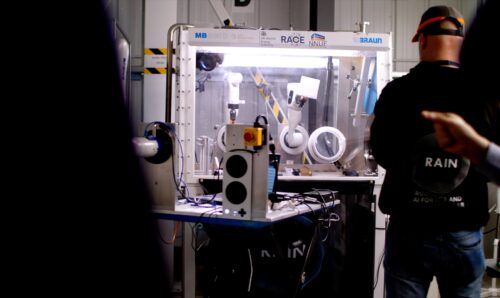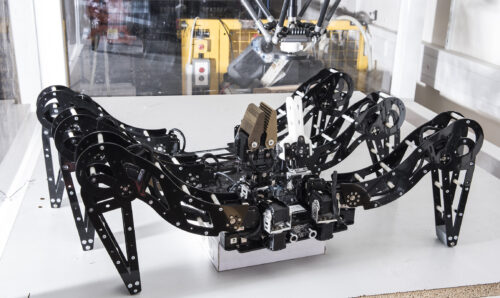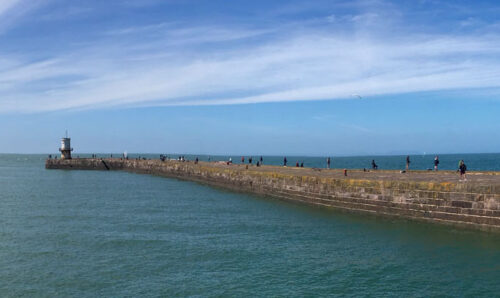Innovating in the day-to-day
Blog 7 August 2019
Author: Ian Tellam, Postgraduate Researcher, School of Social Sciences, The University of Manchester
As an anthropologist engaged in the immersive research practice of ‘ethnography’ I often find myself very wrapped up in the day-to-day, the quotidian, the bits and pieces which make up research, decision-making and no small amount of bureaucracy – things that most people on the inside will often take for granted.
An outsider will quickly become aware of what is different, what seems unusual or interesting – just as when you might travel abroad to somewhere you haven’t been before. Perhaps you’ve read about the ‘culture’ and you can have a general idea of what to expect.
When you actually arrive at your destination, though, it’s often the ‘small’ differences that stand out the most; actions that set things apart , from what seems ‘normal’ to you. When we travel, or start a new job, or visit someone else’s family, we become very aware of all the little ways in which things are similar, yet different.
Cultural-Awareness
We don’t generally experience the same heightened awareness to the cultures we engage with in our day to day life. Perhaps there are one or two things you associate with the place you live, or work, or other communities with which you take part – stereotypes or archetypes that seem to ring true.
There are usually a handful of traits that you can point to and say “yes, this is us, this is what we do, and this is how we do it”. But underpinning that there are going to be values, behaviours and habits which are just taken for granted because ‘of course things are that way, how could they be any other?’
Yet to a stranger these things which you take for granted can seem peculiar, even illogical. There seems no particular rationale behind these mundane activities and you and everyone else in the community simply engages with them habitually.
After all, if you had to rationalise every action you took from the moment you awoke, it would probably be half-way through the afternoon before you left the house.
For the most part, the actions you take in your day to day life you just do. And because this is the way things are, then generally we make an assumption that they are that way for some good reason – otherwise why would people do things this way?
Autonomous Behaviour
Most behaviours are never explicitly explained but we pick them up and internalise them to the point of automation so valuable brain-power can be spent elsewhere. To help us do this, objects and processes become standardised.
Computer keyboards, for instance, mostly have the same layout, so you don’t really need to think about the function of each key – you can concentrate instead on the content of your writing.
Processes too become typical – you know how to order food in a restaurant, for instance, because, by and large, most will operate in a similar manner.
If you could be completely objective, you might look at these things and come to the conclusion that there seems no particular ‘rational’ reason why they exist in the forms they do.
Looking at the computer keyboard, for instance, it isn’t the most ergonomic or efficient design by any measure, and it’s full of vestigial historical baggage (when is the last time you used your ‘Scroll Lock’ key?)
Nevertheless, it’s ‘the way things are’, and changing things at this point, even with an eye towards improvement, would require serious engagement and effort from designer and user – and who has time for that when there are important things to actually write?
Indeed, we don’t need to think about learning a new input method, or a novel way to order food, because we are more concerned with the outcome. The report is the important thing, or the meal we that we wish to eat – that is our objective, and by and large, certainly in our work lives, we think of that as our priority. Particularly when there is a sense of urgency.
Understanding
Coming to understand the relationships between the day-to-day processes and the grand objectives of life is a challenge, and certainly no less for the ethnographer who tends to dwell in the minutiae of everyday life. This recently became clear to me after I attended a series of workshops arranged by The Beam to investigate possible end states for the Sellafield site.
By observing and participating in the nuclear research community I had become somewhat familiar with the practices and patterns of its behaviour and language – to the point where someone at the workshop had to stop me and ask me what I was talking about after I started dropping various acronyms into the conversation (there are certainly a lot of acronyms in nuclear).
By the end of the first workshop, though, I was feeling rather disorientated. The task of decommissioning Sellafield is massive and multi-generational, something that will take 120 years at least.–
As the subject matter of the workshops suggests – there is not yet a fixed idea, or ‘blueprint’, for what the end state of the site will be.
Understanding how all these practices build up and tie in with such long-term goals seemed a huge challenge. Of course, all futures must somehow be built in the day-to-day, and in most cases we don’t know what the future will look like. Yet there seemed to be a chasm between my ethnographic focus on the day to day, and the long-term vastness of the decommissioning project.
Building to the future
Reflecting on this over the next couple of days I recalled a paper I had read by David Turnbull (Turnbull 1993), where he compared the work of a large-scale industrial laboratory to the building of a medieval cathedral.
Cathedrals were the mega-projects of their day. Rather like the decommissioning of Sellafield, they could take well over a century to complete, and they would employ thousands of people over the course of their construction, often several generations of masons.
Yet, while there may be a general idea of how the final structure should look, until perhaps the 1400s cathedrals were not constructed from an architect’s plans. While masons would employ ‘site plans’, illustrative descriptions for the design of particular arch or buttress, there was no definitive prescriptive design for the finished cathedral.
Moreover, the masons who worked on the buildings were illiterate, and there were no standard units of measurement, with different masons employing their own idiosyncratic forms of measure.
Despite this, somehow, these huge gothic buildings would be erected and, with the exception of the odd crumbling spire or collapsing arch, would stay up – sometimes enduring for centuries.
Conclusion
It is perhaps clearer when looking at cathedral construction, to understand how the daily practices of skilled experts can ‘come together’, incrementally and over several lifetimes, to create something vast and significant.
Because in that case there was simply no other way to do it, because nothing could be written down and measured out on paper in advance, and there was no other way it could be. Cathedrals are, therefore, visible accumulations of skilled practice, of experts’ honed intuition and, at times, improvisation and innovation – but all expressed through their day-to-day work.
While I have yet to meet (as far as I’m aware) any illiterate nuclear experts, it is through a similar accumulation of understanding and transfer of knowledge, perhaps, that a link can be formed from the day to day practice, to the ultimate state of the Sellafield site.
While thinking in these terms, it is also worth considering that when a cathedral was finished it may have been the end of the construction project, but it was not the end of the cathedral. The purpose of the cathedral in its ‘end state’, to serve the community and, according to the medieval mind, to enlighten and edify them, had only just begun.
So, from an ethnographic viewpoint, the metaphor of the cathedral reframes the decommissioning project too; rather than a project of deconstruction and demolition, understanding the decommissioning process from the perspective of those who are working towards this each day presents it as a creative, generative endeavour, where something, more abstract than a gothic cathedral perhaps, is in fact being built.
In those terms we may not know exactly what shape that will take, but it may well be something equally enduring and, to our modern minds, equally important and valuable.
About Ian Tellam
Ian is a PhD student in Social Anthropology at the University of Manchester. He has worked in the IT sector over the last 15 years within… Read more.





Leave a Reply